Experience Trading
on the Go
on the Go
Reading Time: 36 minutes
CFDs are a contractual agreement between an investor and a provider to trade the difference in value between the open and closing price of a financial product. This way traders can earn a profit by correctly speculating on whether the value of a financial product will rise or fall without taking ownership of the underlying asset. It is a financial derivative product that allows traders to take both a short and long position to profit from price movements in various financial markets such as forex, shares, commodities and indices.
Although CFDs are more commonly used by experienced CFD traders, with the right support and risk management, less experienced traders can also enjoy its benefits. The Regulators have also been introducing rules and restrictions on CFDs (ESMA adopts final product intervention measures on CFDs and binary options, 2018), aimed at making CFDs less risky which in turn will make it more accessible to amateur traders.
Practically, CFD trading involves making an investment on whether a price will rise or fall, without having the need to take ownership of the asset in question. What separates CFD trading from trading in physical assets is the right to ownership and the ability to make short trades. When trading CFDs there is no physical delivery of goods or securities. It is an agreement between the client and broker that if the price moves in their favour they will earn a profit, and if not, they will suffer a loss.
A CFD trader gains profits when they enter and exit the CFD market at the right time. So, a CFD contract is made up of two trades. The first trade is entering, or opening a position, in the CFD market. The second trade is closing that position. Hence, if a CFD trader speculates that the underlying asset will rise, they will buy the CFD. In this case the first trade is the buy or long position, and the second trade is the sell or closing position. In contrast, if the trader predicts that the asset will drop in value, they will sell or short the CFD. Here the first trade is the sell or short position, and the closing trade is the buy.
The profit is calculated based on the difference between the opening and closing position. So, if a CFD trader enters and exits a position at the wrong time then they will suffer a loss calculated again based on the difference between the opening and closing position.
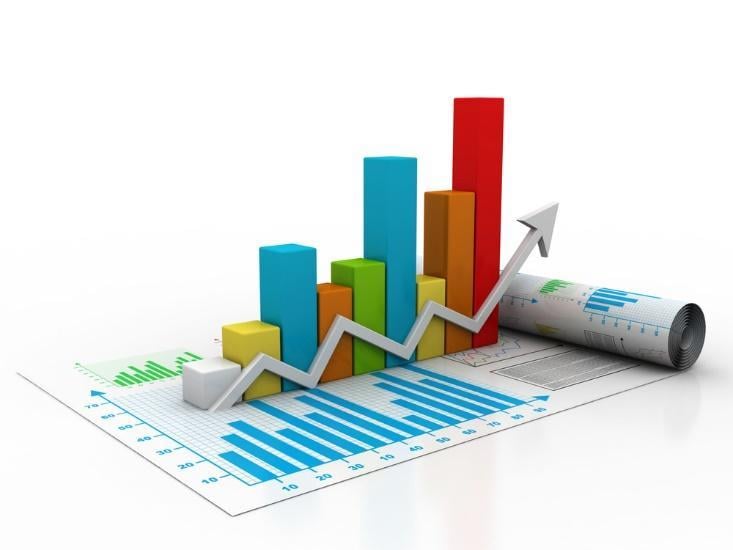
One of the great things about CFDs is that they allow you to trade on the price movements of any financial market like stocks, commodities, indices and currencies, without actually owning the underlying asset. They can also be used to speculate price moves in the futures market.
You can apply CFDs across different assets that have drastically different values and volatilities. So, it is crucial that when trading in CFDs, the investor needs to have a great understanding of the market that they are engaging in.
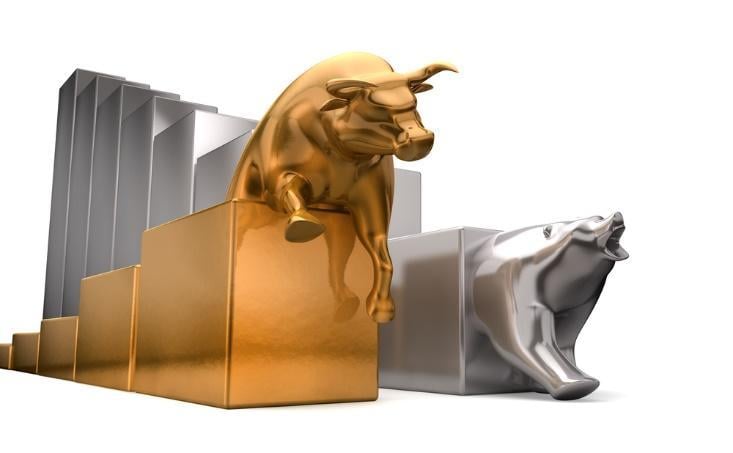
A traditional trade involves buying an asset in the hope that that asset will rise in value for which you can then sell and earn a profit. This is known as going long. CFD trading also allows traders to earn a profit when the asset drops in value, which is going short. The profit in both cases is calculated based on the marginal difference between the opening position and closing position minus costs.
There are various benefits of CFD trading. Some include:
Access to the underlying price movement at a smaller financial commitment:Because CFDs are leveraged products, they allow investors to take up a much larger market position without needing to put up the actual amount (this process is called ‘trading on the margin’). By trading on the margin, you are able, but not obligated, to purchase more than what you normally would. This is known as the leverage effect and is the main reason why investors like to choose CFDs, as it allows you to use your capital more efficiently.
Higher leverage:Trading on the margin typically provides higher leverage than what traditional trading may offer. In the CFD market, a standard leverage can have a margin requirement as low as 3%. A low margin requirement means less capital outlay needed and a greater potential return for the investor. Keep in mind though with high reward also comes high risk and greater potential losses.
Access to a variety of global markets and indices:Investors can trade CFDs on a wide range of worldwide markets. What you need to be mindful of is that CFDs are traded over the counter (OTC) by a group of brokers that arrange the market demand and supply for CFDs and determine the price. Hence, CFDs are tradeable contracts between a client and the broker but cannot be traded by major exchanges such as the New York Stock Exchange (NYSE).
The transaction costs are very low: Compared to standard exchanges, CFDs can have fewer rules and regulations that apply to them, which then allows for less capital or cash requirements to open an account with a brokerage company. However, fewer regulations also means less accountability, so when choosing to trade CFDs, traders should make sure to go through a trusted broker.
Flexibility to go long or go short:CFDs allow an investor to take a long or short position. This means that they can invest and profit based on a speculation that the underlying asset value will go up or down.
No day trading requirements: Prior to the development of online trading, the only people that were able to trade actively in the stock market were those that worked for large financial institutions. Restrictions were imposed on those institutions such as minimum capital requirements and trade limitations. CFDs are not bound by those restrictions as all account holders can day trade as they wish.
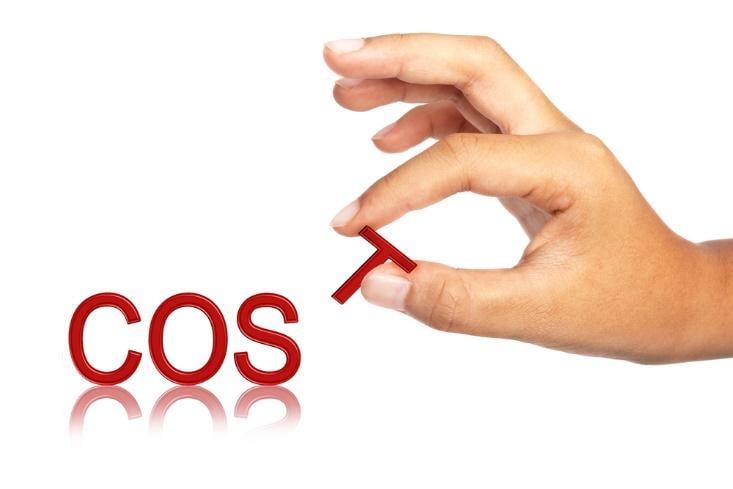
Just like other forms of trades, CFD trading comes with its own costs. For instance, every CFD product has a buy price and a sell price. The difference between them is called the spread. The size of the spread varies depending on the market’s liquidity and volatility and can be the main costs associated with CFD trading. The narrower the spread, the less price movement a trader needs to make a profit or loss.
For those that hold positions for longer than a day, may be subject to a holding cost. This cost may be positively or negatively geared depending on the direction of the position and the relevant holding rate.
CFD trading also includes a commission cost per trade. This is a nominal percentage cost of the underlying asset value that is paid every time a position is opened and closed. Which means that, because CFD trading consists of two trades, when trading CFDs a trader will have to pay commission twice.
Keep in mind, when trading CFDs on the margin, a trader will need to pay interest on the borrowed money. The interest payment will depend on the position taken and the closing price. A long position bears the cost of a base rate plus a nominal interest by the lender. However, when going short the interest is paid back to the trader. The base rate is usually calculated by the interbank system.
TWhen trading with CFDs a trader does not need to pay the full value of the position, but only a fraction known as the margin. It allows them to take on more leverage, amplifying the potential profit scale, but also potential loss.
So, let’s say that gold is trading at a bid offer quote of 2,000 US dollars and a broker is offering a margin rate of 5%. If a trader believes that the value of gold will rise and choose to invest 1,000 US dollars, they will be taking a marginal position worth 20,000 (because if 5% is 1,000 then 100% is 20,000). If then the value of gold rises to 2,200 US dollars, the trader will have earned 2,000 US dollars minus fees if they choose to exit at that point.
Trading on the margin has its benefits as a trader does not need to take out a lot of their own capital to take on a large position and enjoy the earnings that come with it. However, it does come with its risks because if the trade does not go as planned, a trader may even receive a margin call which requires paying extra to hold the position.
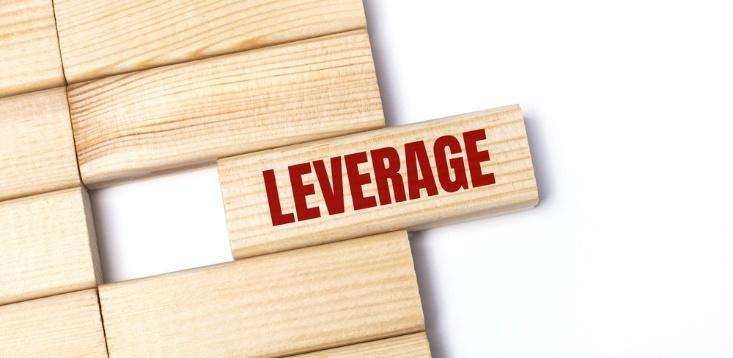
CFDs can be used to leverage a multitude of markets such as Forex, Stocks, Indices, Treasuries, Commodities and Cryptocurrencies. The leverage in CFD trading is the level of amplified exposure traders have above the marginal deposit provided as security (collateral). So, through CFDs, traders can take large positions even up to 500 times their marginal deposit (described as a ratio of 1:500). But keep in mind, with higher reward also comes higher risk, so amplified returns also means amplified losses.
CFDs can be traded without leverage. In fact it might be a good idea, especially for beginners, to start learning how to trade CFDs with a small position size rather than a large position size that also comes with large position risks. This way a trader can familiarise themselves with CFDs whilst keeping their risk to a minimum.
The fact that CFDs can be leveraged is one of the main reasons why traders use them in the first place. For more experienced traders there might not be too much of a point in holding a CFD without leverage because it is pretty much the same thing as holding a share.
Despite popular view, CFDs can also be great strategy tools for long term investors, especially since at times the market has proven to be so unpredictable. With large financial declines taking place, it is only reasonable to have strategies in place to protect or hedge. Hence, some reasons why long-term investors would use CFDs as a hedging tool would be to:
Protect their position against adverse market price movements or profit from market downturns through execution of short positions.
Have long term protection, as CFDs do not have an expiry date.
Minimise the cost of investment, because CFDs trade on the margin.
Mirror the market directly to know the relationship between the hedge and existing trade.
Easily alter their position size, to replicate existing trades.
Limit their risk in case the market doesn’t move as expected.
Spread: The spread is the difference between the purchase price (also known as the bid price) and the offer price (or sell price) at the time of the trade. So, when a trader wants to buy a CFD they pay the offer price and when they want to sell they pay the bid price. Depending on the volatility of the underlying asset, the spread may be small or large.
Commission: A CFD broker may charge a commission per trade. Be mindful that because a CFD trade consists of two trades (the first when opening a position and the second when closing that position), a CFD trader will need to pay the commission twice (round turn), once upon closing and once upon opening the position.
Lot Size: A lot refers to a group of goods or services that form a transaction. They are usually of the same class, model or version of a product and are made under the same circumstances and intended to perform similar functions. It is the standardised quantity of a financial instrument such as a stock or a bond that an exchange or regulatory body defines. The most common lot in forex trading is a ‘standard lot’ which represents 100,000 units of the base currency. A ‘mini lot’ represents 10,000 units and a ‘micro lot’ represents 1,000 units. In forex trading for instance, one standard lot of EUR against USD represents 100,000 units of EUR/USD.
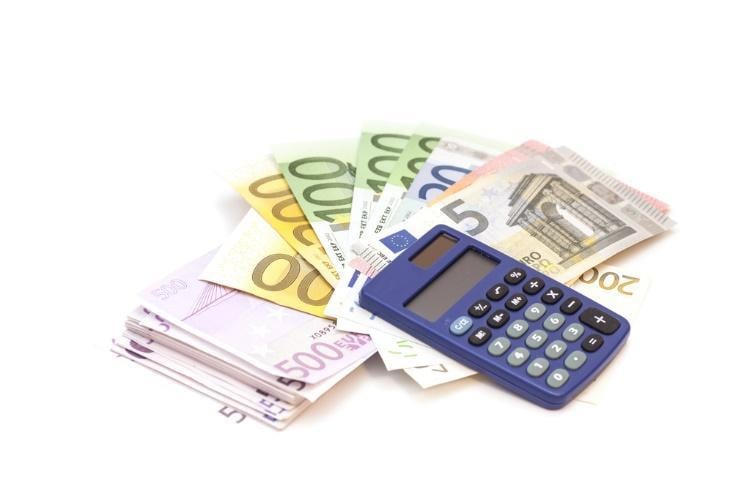
For argument’s sake let’s say Shares of Lloyds Banking Group Plc (LLOY) are currently trading at 51.615 with a buy price of 51.630 and a sell price of 51.600. In anticipation that the stock will increase in value over the next few days, you decide to buy 150 share CFDs of LLOY at 51.630.
Then, say the Lloyds share price did climb and was trading at 52.615 with a new buy price of 52.630 and sell price of 52.600. At this point you could close your position by selling 150 share CFDs of LLOY at 52.600. To then calculate your profit, you would calculate the difference between the closing price and opening price of your trade and multiply it by its size. In this case, your profit would be £145.50 ([52.600 – 51.630] x 150), excluding any additional costs.


However, if the Lloyds share price decreased to 50.515 (buy price 50.530 and sell price 50.500) and you chose to close your position by selling the shares at that point of time, you would make a loss. To calculate this loss you would have to first find the difference between the closing price and opening price of your trade and then multiply it by its size. Hence, it would be a loss of £169.50 ([51.630 – 50.500] x 150 share CFDs), excluding any additional costs.



There isn’t necessarily a trading style that fits for all and the trading style you choose to follow may depend on your own preferences, personality and investment profile. What follows are four common trading styles to consider.
Swing trading: This involves holding a trade for a few days or weeks before closing the position. It is a trading style that is supported by technical and fundamental analysis as traders consider graph signals as well as supply and demand trends.
Day trading: This CFD trading method is particularly adopted by traders that want to benefit from intra-day price movements and avoid being exposed to overnight holding fees. Unlike swing trading that requires traders to be patient before closing a position, day trading is a short-term trading style, but not as short as scalp trading.
Scalp trading: Typically, when a trader scalps the CFD market, they are opening and closing a position within minutes, attempting to gain small but consistent earnings, to grow steadily with minimum risk as possible.
Position trading: Position traders follow one of the basic forms of market analysis through treds, and unlike a day trader, position traders take a trading position (long or short) for an extended period of time.
As mentioned, when buying CFDs, you are not buying or selling the underlying asset. Instead, you are investing in an agreement with the broker on whether the asset price will go up or down. So, if a trader believes the asset will go up in value, they buy some units (or go long). And if the trader believes that the value will go down, they can sell some units (or go short).
The profit or loss in CFD trading depends on the price you enter and exit. The more points the market moves in your favour, the more profit you make. The difference multiplied by the number of units equals the number of profits.
However, suppose the market moves in the opposite direction. In that case, the trader will suffer a loss again calculated by multiplying the difference in movement by the number of units bought. Keep in mind that in both circumstances, whether the price moves in the trader’s favour or not, they still need to pay costs associated with making the trade.
Various platforms are offered in the market by brokerage firms that give access to traders to participate in the CFD market. By opening an account with FP Markets, you can start trading in CFDs with an internationally awarded and regulated CFD broker with a deposit as small as 100 AUD or equivalent.
Contract for Differences (CFDs) offers a cost-efficient way to trade on thousands of global financial instruments, including foreign exchange, shares, indices, commodities, bonds and ETFs. Choosing the right instrument will greatly depend on one’s knowledge of that instrument. For instance, if you choose to trade in the foreign exchange market, let’s say particularly in USD/EUR, you should have a good understanding of the current economic affairs in both countries. Knowing only one side of the coin opens a trader to unforeseen risks. Keep in mind CFDs are leveraged products that bring amplified returns but also amplified risk.
One of the greatest features of CFDs is that it allows traders to take the traditional long position or the more daring short position. Various factors can influence a trader in choosing which CFD position to take. The one that must be most avoided is a position based on emotional decision making. Various market analysis tools are available online with proven back-tested strategies that help remove the emotion for trading and have proven to help traders gain an edge. Learning to implement technical and fundamental analysis are also very important skills to understand how to read charts and explore fundamental economic principles to lead to informed decisions.

FP Markets offers an evolutionary fleet of trading platforms that give you access to the global financial markets at any place and any time. With FP Markets’ Metatrader 4 (MT4) and Metatrader 5 (MT5), traders have access to over 10,000 financial instruments and 60+ forex currency pairs along with a personalised interface, real time volume data and copy trading. Iress Essentials offers an advanced trading toolbox and an exclusive trading risk manager. Through WebTrader traders can access MT4 and MT5 on their Mac OS or Windows platform. FP Markets also offers trading on the go facilities via the Mobile App. They are designed for high performance and advanced functionality supported by ultra-fast trade execution and the finest market and analysis tools.
CFD brokers provide traders with the necessary platforms to open a trading account to buy and sell CFDs. Some, like FP Markets, also offer a demo account for a trader to practise and familiarise themselves with CFDs before actively engaging in the market. One of the things to keep in mind is that CFD brokers earn a fee through the spread. So, the tighter the spread offered the smaller that fee will be. Also, when working with a CFD broker, traders should make sure that the broker is regulated by a recognised security commission. This provides traders with the comfort knowing that they can trade through a platform that is regulated by the highest authority and held to the highest practice standards. Global recognition is also a good indicator of a broker’s reliability.
Whenever trading in the financial market, it is crucial for investors to have a risk management process in place that they strictly follow. This is especially important when trading with leverage, because although the gains can be magnified, so can the losses which means that it carries a certain level of risk. To mitigate that risk, it would be advisable to:
Create a trading plan: Limit your investment to what you can afford and clearly outline goals and expectations.
Avoid over leveraging: Taking on too much leverage can lead to what is called a margin stop out and could lead to losing the entire investment.
Use a regulated broker: Trading with a regulated broker provides investors with protection and their deposits are likely to be secured.
Use market trading tools: Markets can change rapidly. By having reliable trading tools, you can monitor market changes quickly and make informed decisions.
Consider using a guaranteed stop loss: This will automatically close a losing trade once it reaches a predetermined level.
Start a demo or live account with FP Markets, a globally recognised and award winning regulated broker. A CFD trading account with FP Markets offers tight spreads as low as 0.0 pips, fast trade executions, advanced technology with automated traded strategies and over 10,000+ tradeable CFD products ranging from Forex, Shares, Metals, Indices, Cryptocurrencies, Bonds and Commodities.
Tatiana Freitas, M. D. (2022, January 11). ESMA adopts final product intervention measures on CFDs and binary options. (2018, June). Retrieved from European Securities and Markets Authority: https://www.esma.europa.eu/press-news/esma-news/esma-adopts-final-product-intervention-measures-cfds-and-binary-options
 Access 10,000+ financial instruments
Access 10,000+ financial instruments Auto open & close positions
Auto open & close positions News & economic calendar
News & economic calendar Technical indicators & charts
Technical indicators & charts Many more tools included
Many more tools included
By supplying your email you agree to FP Markets privacy policy and receive future marketing materials from FP Markets. You can unsubscribe at any time.
Source - cache | Page ID - 21156